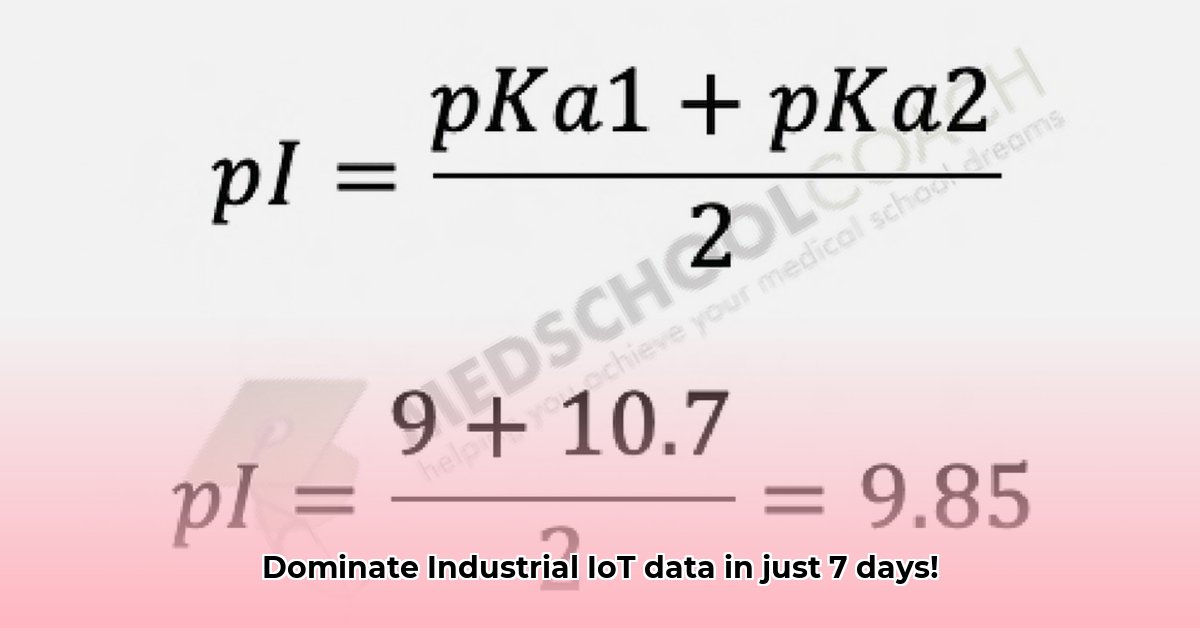
This seven-day guide provides actionable steps to optimize your AVEVA PI System data management, improving your Industrial Internet of Things (IIoT) insights. We'll cover PI Points, Tags, and Assets, offering practical advice for various user roles. By the end of this guide, you'll be equipped to effectively manage and leverage your IIoT data for improved operational efficiency.
Day 1: Understanding PI Points, Tags, and Assets: Building Blocks of Your Data Warehouse
Consider your AVEVA PI System a highly organized data warehouse. Let's define the core components:
- PI Point: Stores individual, time-stamped data from a single source (e.g., a sensor). Think of each PI Point as a container holding specific data.
- Tag: A descriptive label associated with a PI Point, providing context and additional information. Tags might be identical to the PI Point name or offer supplementary details.
- Asset: A hierarchical grouping of related PI Points, significantly enhancing organization and analysis. Assets create logical structures within your data warehouse.
Understanding the relationship between these three elements is the foundation for effective data management. Poor organization leads to data chaos; a well-structured system yields valuable insights.
Day 2: Crafting a Standardized Tagging Strategy
Inconsistent tagging is a major source of data management issues. Implementing a standardized tagging system today is crucial. This system should:
- Use a consistent naming convention: Define clear rules for naming tags to ensure uniformity and avoid ambiguity.
- Create a data dictionary: Document the meaning of each tag clearly. This will be your definitive reference ensuring that everyone understands the data, regardless of their role or familiarity within the organization.
- Start small: Don't try to overhaul everything at once. Focus on a specific area of your system for a faster win.
A robust tagging strategy is critical for efficient data analysis and reduces errors stemming from misinterpretations. What's your plan to standardize your tagging today?
Day 3: Optimizing PI Point Configuration: Data Acquisition Frequency
Not all data needs to be collected at the same frequency. To optimize your system, assess and modify the data acquisition frequency for each PI Point. This means:
- Review current frequencies: Determine if the current sampling rates are truly necessary. Overly frequent updates lead to unnecessary data storage and processing demands.
- Adjust sampling rates: Reduce sampling rates where possible without sacrificing valuable insights. Fine-tune each PI Point based on its criticality and the insights you derive from it.
- Consider the trade-off: A slower sampling rate saves resources but may introduce a small amount of latency into your system. For most sensors, slower rates (e.g., once a minute) may be better than faster rates (e.g., every second) if the additional resolution is not required.
This optimization enhances performance and reduces storage costs while maintaining data integrity. Do you need data every second, or will a collection every minute suffice?
Day 4: Leveraging the PI Asset Framework: Organizing Your Data Hierarchy
The PI Asset Framework is your tool for organizing PI Points into logical groups. By structuring your data within the hierarchical framework, you will greatly enhance:
- Data visualization: Easily identify relationships between data points and streamline analysis.
- Alarm management: Efficiently manage and track alerts based on asset groupings.
- Data retrieval: Locate specific data more quickly, streamlining your workflows.
Organize your PI Points into Assets today, mirroring your physical plant structure or operational processes. This greatly enhances the system's usability. How will you organize your data within the Asset Framework today?
Day 5: Establishing a Data Quality Hygiene Routine
Data quality is paramount. Addressing data inconsistencies prevents inaccurate insights and inefficient processes.
- Periodic checks: Regularly monitor data for inconsistencies, missing values, or outliers.
- Data validation: Implement validation rules to ensure data accuracy upon ingestion.
- Cleanup processes: Establish procedures to deal with problematic data – whether correcting or removing it.
Implementing robust data governance measures reduces errors and improves the reliability of your data. What measures will you put in place to maintain data quality?
Day 6: Prioritizing Data Security and Access Control
Data security is non-negotiable. To ensure data integrity:
- Restrict access: Enforce strict access control, granting only authorized personnel access to sensitive information.
- Audit trails: Maintain detailed logs of all data access events.
- Regular reviews: Periodically review and update security policies to address evolving threats.
Protecting your valuable data is paramount. What security measures will you implement to protect sensitive data?
Day 7: Integrating Advanced Analytics: Unlocking Data's Potential
The final step is to leverage your organized and secure data for maximum benefit.
- Integrate with Business Intelligence tools: Connect your PI System to advanced analytics platforms enabling predictive maintenance and process optimization.
- Implement data-driven decision-making: Use your improved data management to inform critical decisions and improve operational efficiency.
- Evaluate results: Continuously monitor the impact of these improvements to continuously optimize your strategies.
By integrating your data with analytics platforms, you can make data-driven decisions to improve efficiency and reduce costs. What new data-driven insights will you pursue?
Key Differences: PI Points, Tags, and Assets Summarized
| Element | Description | Analogy |
|---|---|---|
| PI Point | Stores time-stamped data from a single source. | A single data container. |
| Tag | Descriptive label providing context. | A label on the container. |
| Asset | Hierarchical grouping of related PI Points. | A section of the warehouse holding related containers. |
This seven-day plan provides a solid foundation. Consistent effort, iterative improvement, and a focus on data quality are crucial for long-term success in handling your AVEVA PI System data. Remember, this is an ongoing process; focus on small, steady progress.